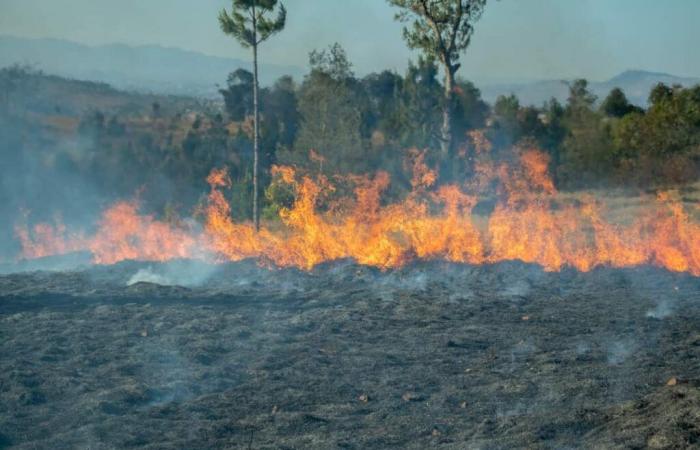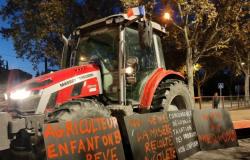| A burnt land in Mandoto recently. |
Fires ravage Madagascar. The Ministry of the Environment and Sustainable Development mobilizes local structures to combat them.
This fire season is particularly harsh. The landscapes along the national roads, whether North, East, West or South, have an arid and devastated appearance. The vegetation is charred from one village to another. According to the Ministry of Environment and Sustainable Development,
70% of the country's municipalities, or 1,190 out of the 1,695 recorded, were affected by the fires. In October, the burned area reached one million twenty-four thousand five hundred and fifty hectares, ten thousand hectares more than the average of the last four years for the same period. Of these fires, 98.31% are bush fires and 1.69% are forest fires.
Pasture fires and slash-and-burn cultivation, very common during this period, are at the origin of these disasters, but arson is also blamed. Fueled by drought and oppressive temperatures, the fires are becoming difficult to control. In Mandraka, in the rural commune of Ambatolaona, a fire in a private forest, which occurred on Sunday, was not completely extinguished yesterday. “The fire is under control, but there are still outbreaks,” reports a local source.
Prescribed burning
Bushfires not only threaten the environment but also agriculture. “Erosion is a direct consequence of fires. The silting of rivers and rice fields is to be feared. If the fires persist, the rice fields will dry out more quickly and the humidity level of the vegetation will drop, due to lack of a protective layer. Precipitation will also decrease, because fires do not favor rain,” explains a forester, who recommends prescribed burning to limit the spread of slash-and-burn and grazing fires.
The fire season is still far from over. The smoke, visible from national roads or from the sky for those traveling by plane, bears witness to the progression of the fires. To deal with this, the Ministry of the Environment and its partners mobilized twelve thousand local structures, involving one hundred and ten thousand people ready to intervene immediately. These structures include the Joint Design Body (OMC), the Regional Directorate of Environment and Sustainable Development (DREDD), local communities (VOI), local firefighting committees (KMDT), as well as other actors.
However, on the ground, resources are sorely lacking. “We are under-equipped. We fight the fires with spades and tree branches,” laments a member of the community in Mandraka. The ministry calls for general mobilization and insists on the need for additional resources for the purchase of extinguishing equipment, in order to prevent an even greater spread of fires.
Miangalya Ralitera






